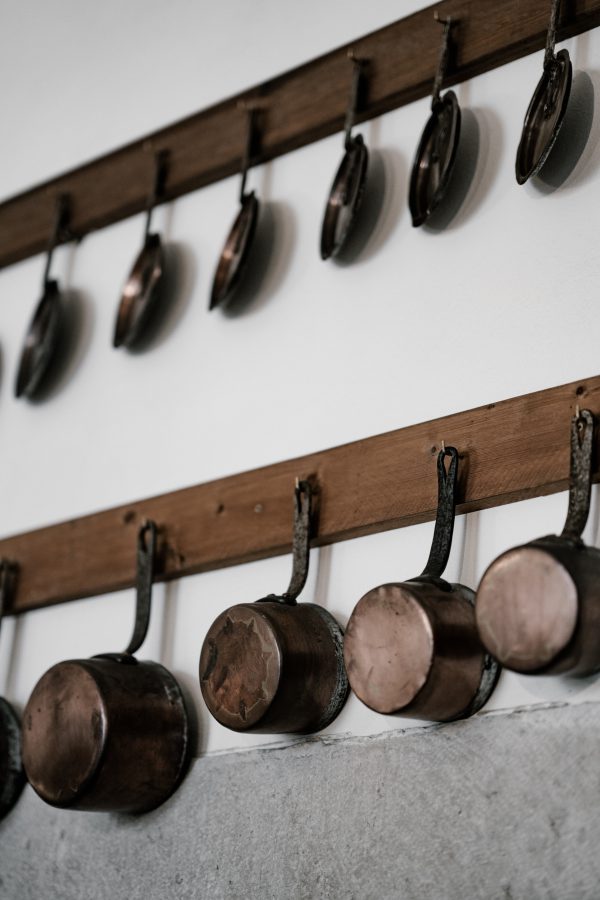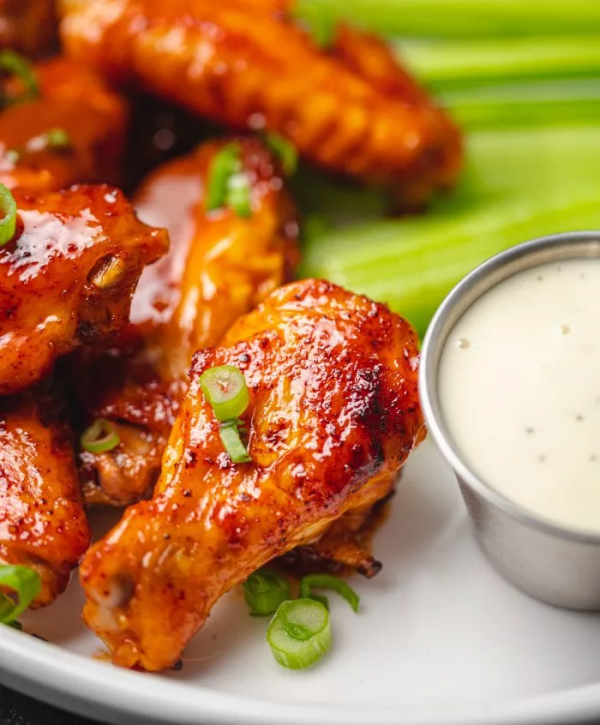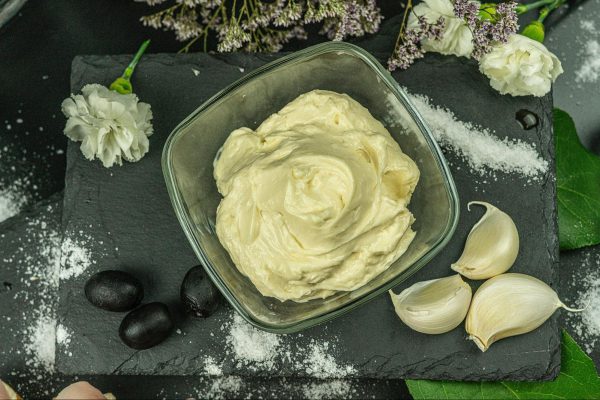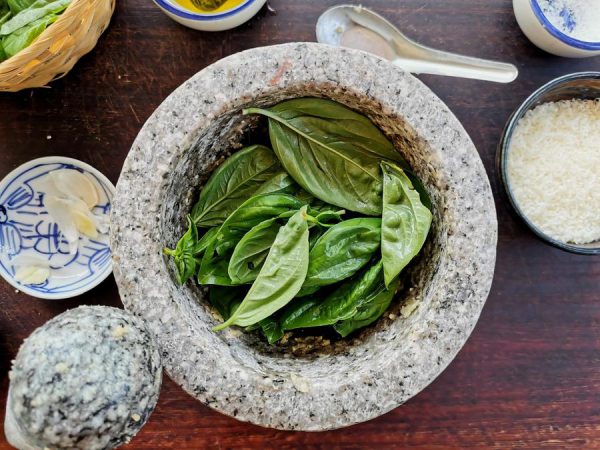Last Updated on March 05, 2023
Cast iron skillets are as heavy-duty as they look. They are sturdy, retain heat better than any other cookware, and can make your kitchen look much cooler when hung over a rack.
Although cast iron skillets can do more than regular kitchenware in terms of searing, glazing, or even baking, thanks to their unique heat-retaining features, this efficiency comes with a cost, as these pans can be really high-maintenance. So, the question is: Are they worth the extra effort?
Today, we’re illuminating the mystery around cast iron skillets so that you learn how to use one to improve your array of recipes with phenomenal glazes and crusts and how to take care of your skillet so that it actually gets better over the years.
What Makes Cast Iron Skillets Indispensable?
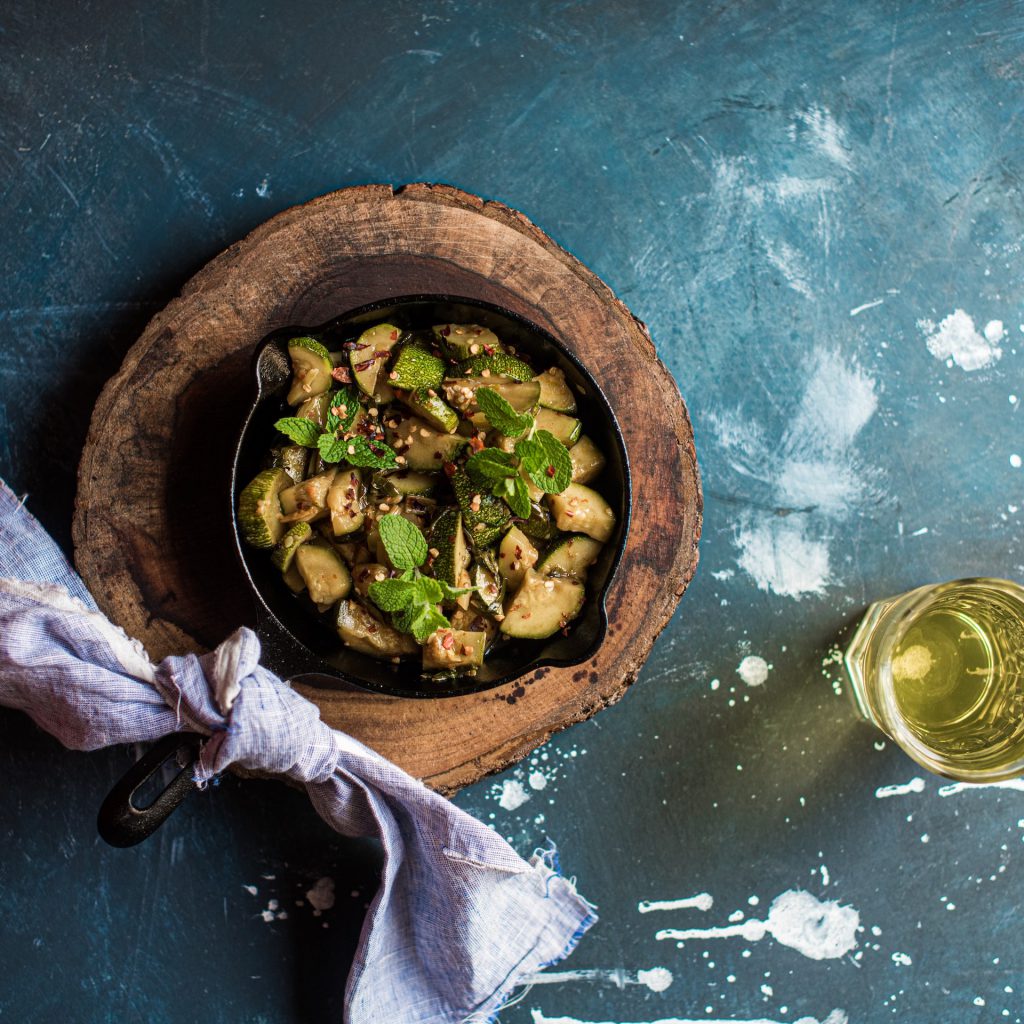
For a lot of people, cooking happens with nothing but a good knife, a good chopping board, and some kind of pan. A cast iron skillet is definitely not on their list of must-have kitchen equipment. While there’s nothing wrong with keeping it simple, a cast iron skillet is worth the money if you want to step up your cooking game.
Thanks to their durability, high heat retention, and emissivity, cast iron skillets are a unique addition to your kitchenware that you won’t ever regret.
Durability
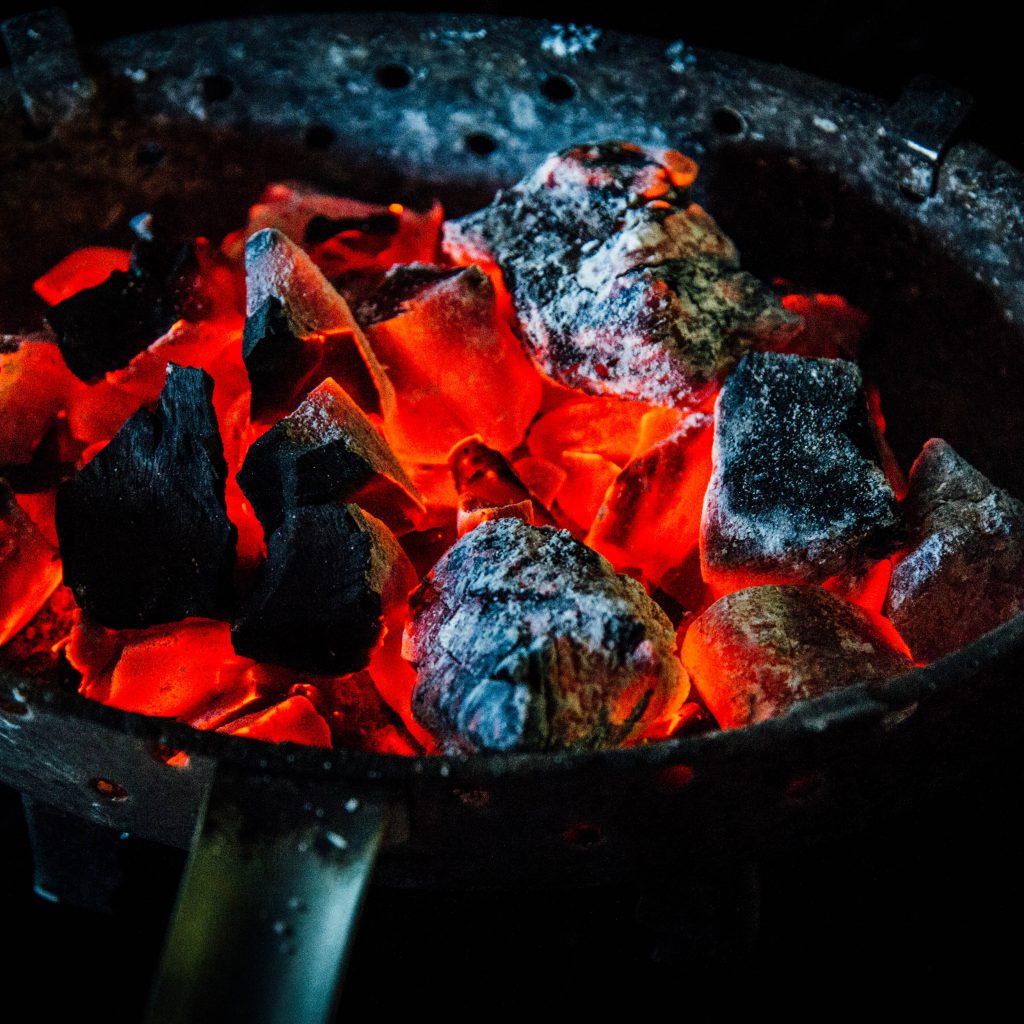
Cast iron cookware is made by pouring a melted mixture of steel, iron, and alloys into a mold made of sand. Once it cools down, the sand mold gets broken to remove the cast iron skillet nesting inside — just like the ancient blacksmiths did back in the day.
The end product is a strong, robust, and heavy pan that’ll endure long years of heavy use as long as you care for it properly. The mixture of the alloy determines the overall physical properties of the skillet, but we’re not talking about war hammers here, so you can be sure any cast iron skillet is strong enough for kitchen use.
Cast iron tools are extremely sturdy and impossible to break by brute force. However, if you look closely, you’ll see that the surface of your cast iron skillet is porous, making it very susceptible to rust. To prolong its life, you need to minimize the time your cast iron pan spends wet. The good news is that rusting is easy to prevent and easy to remove if it gets to that.
How to Remove Rust From a Cast Iron Skillet?
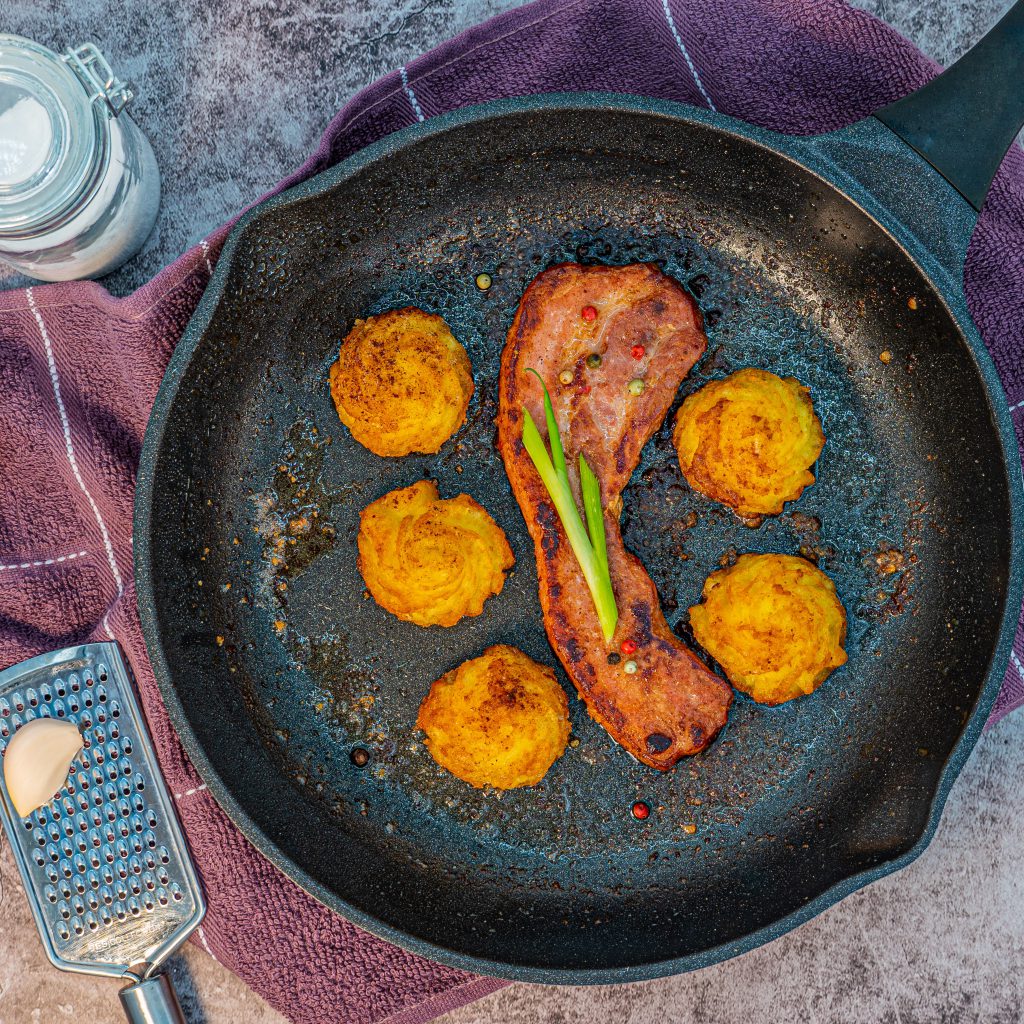
Let’s say you inherited a piece of vintage cast iron kitchenware with rust patches on it or simply neglected yours only to find it covered in rust. We’ll tell you all about how to prevent this down below, but what can you do when the damage has already been done?
To get rid of the rust from your otherwise fine cast iron pan, follow these steps:
- Wash, scrub, and clean the pan with tepid water and unscented soap.
- Dry it completely, drain the excess water, rub it down with a kitchen towel, and let it air dry. You can place it over the heat to ensure it’s thoroughly dry.
- Apply a thin layer of cooking oil over the pan. Rub the oil on the pan’s surface with a paper towel and remove any excess oil that runs through the pan when you tilt it.
- Place the pan upside down on the center rack of the preheated oven at 250 C and let it bake for 1 hour.
- Let it cool in the oven before taking it out.
The fact that you can salvage an ancient cast iron skillet proves they can last a lifetime with proper care. Cast iron skillets can even be passed down for generations since it’s impossible to break or damage them irreversibly.
Heat Capacity and Emissivity
Iron has the lowest thermal conductivity among household cookware materials, which means it heats up slowly. If you’re looking for a pan that heats up immediately when you place it on the stove, go for an aluminum one.
On the other hand, cast iron skillets have a great heat capacity, or in geek terms, thermal sluggishness, which means the skillet also takes a long time to cool down, even after you turn down the heat. This way, your pan continues cooking the food passively after you take it off the stove.
Apart from how fast the pan heats up and how slowly it cools down, another variable that affects the cooking process is the emissivity or the ability of the surface of a given material to emit radiation (the term is generally associated with health hazards, but it’s actually a natural and inevitable phenomenon, similar to how the sun warms up the earth).
Cast iron is highly emissive, which means if you edge up your hand close to the hot skillet, you’ll feel the heat radiating from the surface. This is not the case with stainless steel or aluminum cookware. Since they are not as emissive as cast iron, only the part of the food that touches the pan sizzles with heat, while the rest stays relatively cool.
But enough physics talk, what this means in home-cook language is that a cast iron skillet helps you simmer the food more efficiently and cook even the parts that are not touching the pan.
Are Cast Iron Skillets Non-Stick?
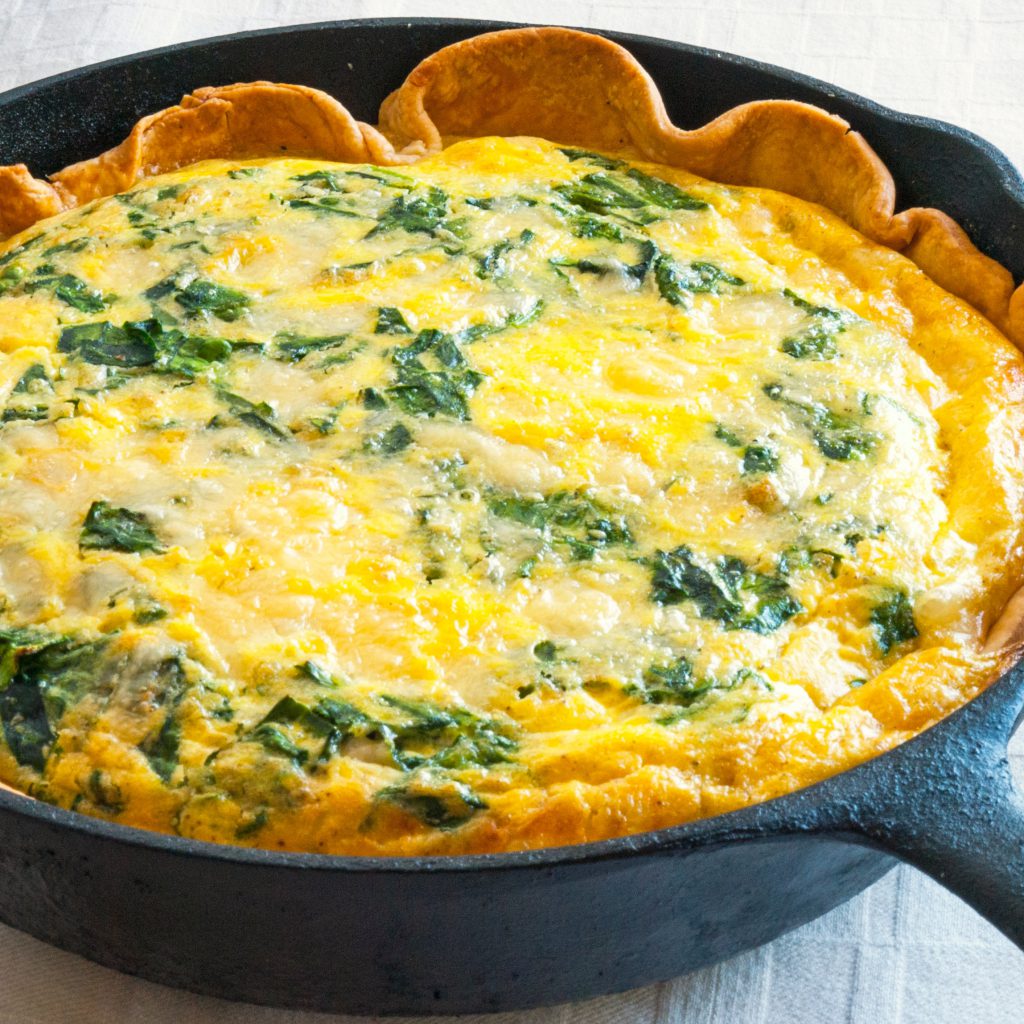
Cast iron skillets aren’t non-stick when they are brand new unless they come with a non-stick coating. But this is where the seasoning comes in. A properly seasoned cast iron skillet should be reasonably non-stick.
Kitchenware with porous surfaces usually needs to be seasoned — just like a natural stone mortar and pestle. The process of seasoning involves spreading a thin layer of permanent oil on the surface of your cast iron pan. The oil layer makes the surface hydrophobic, preventing food that typically contains water from actually touching the surface and getting stuck.
The Most Versatile Piece of Equipment
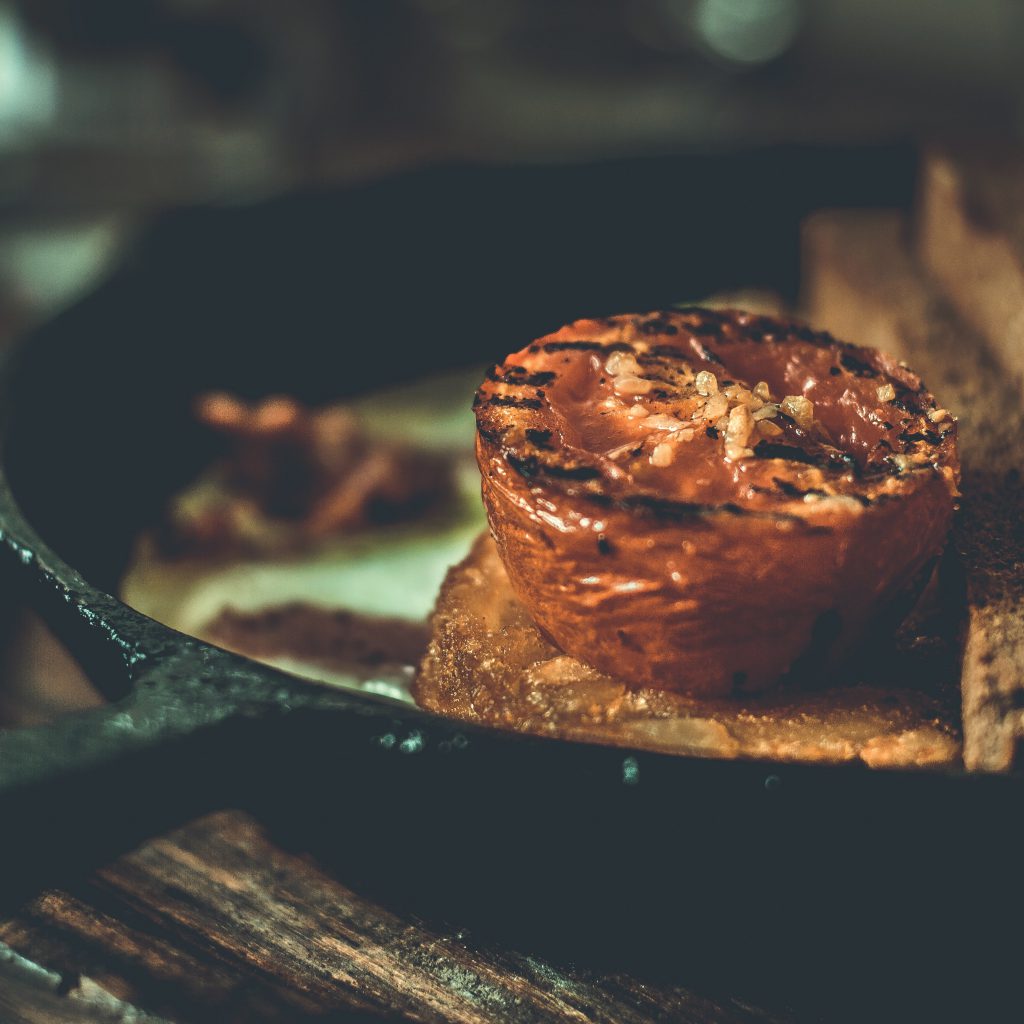
Thanks to its unparalleled heat properties and non-stickiness, a cast iron skillet can be used for many recipes. You can use it to saute, sear, pan fry, braise, broil, roast, and even bake and cook breakfast, lunch, or dinner dishes.
It’s also a very robust piece of equipment, and you can use it on your stovetop, oven, or over the campfire or barbecue without a problem. This way, you can combine different cooking techniques.
And lastly, it will only get better as you use it, thanks to the oil that builds up on the surface, creating a hydrophobic coating. Plus, the building up of oil and different aromas on the surface will add a unique flavor to whatever you cook in it.
How to Care for Your Cast Iron Skillet
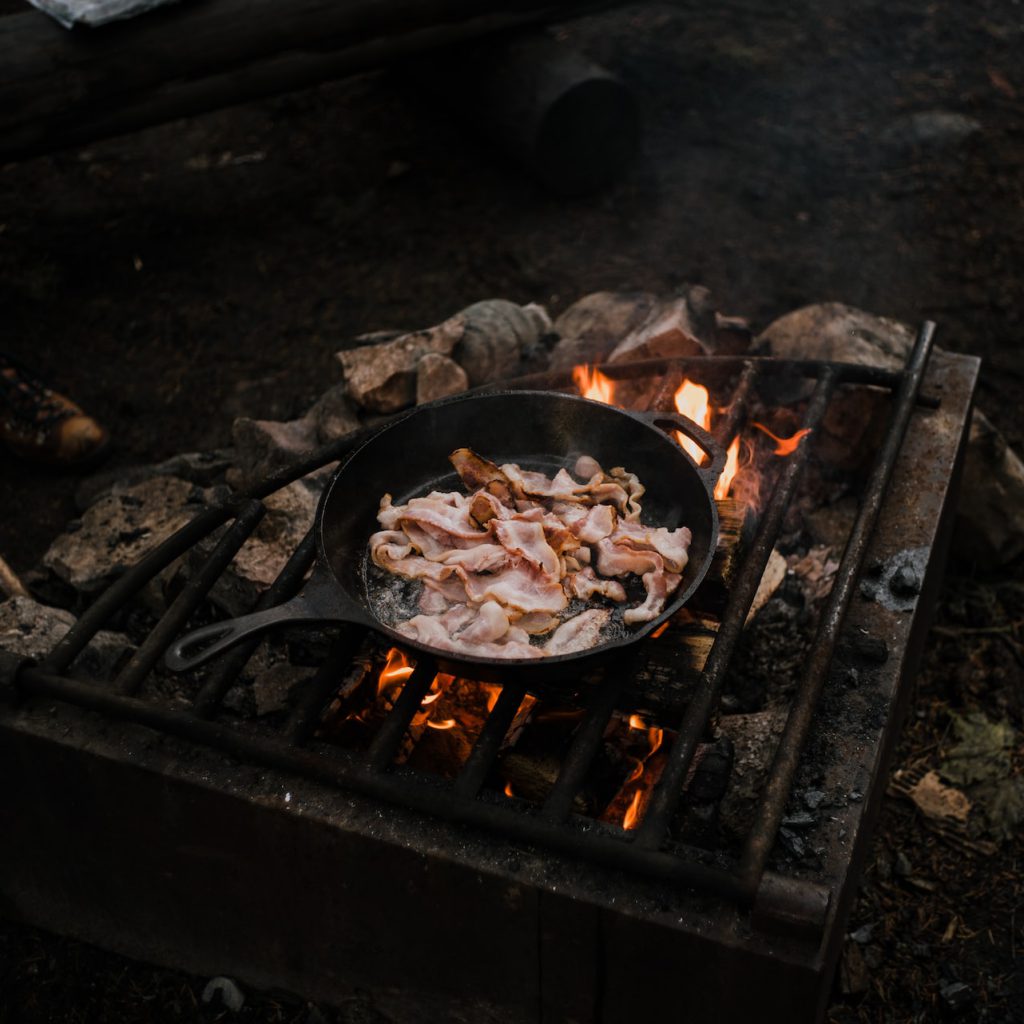
The first thing you need to do when you get a brand new cast iron skillet, or when you’re salvaging an old one, is to clean it — you never know what it has been through before coming to your kitchen. And then, season it. Here’s how to do the two.
Cleaning
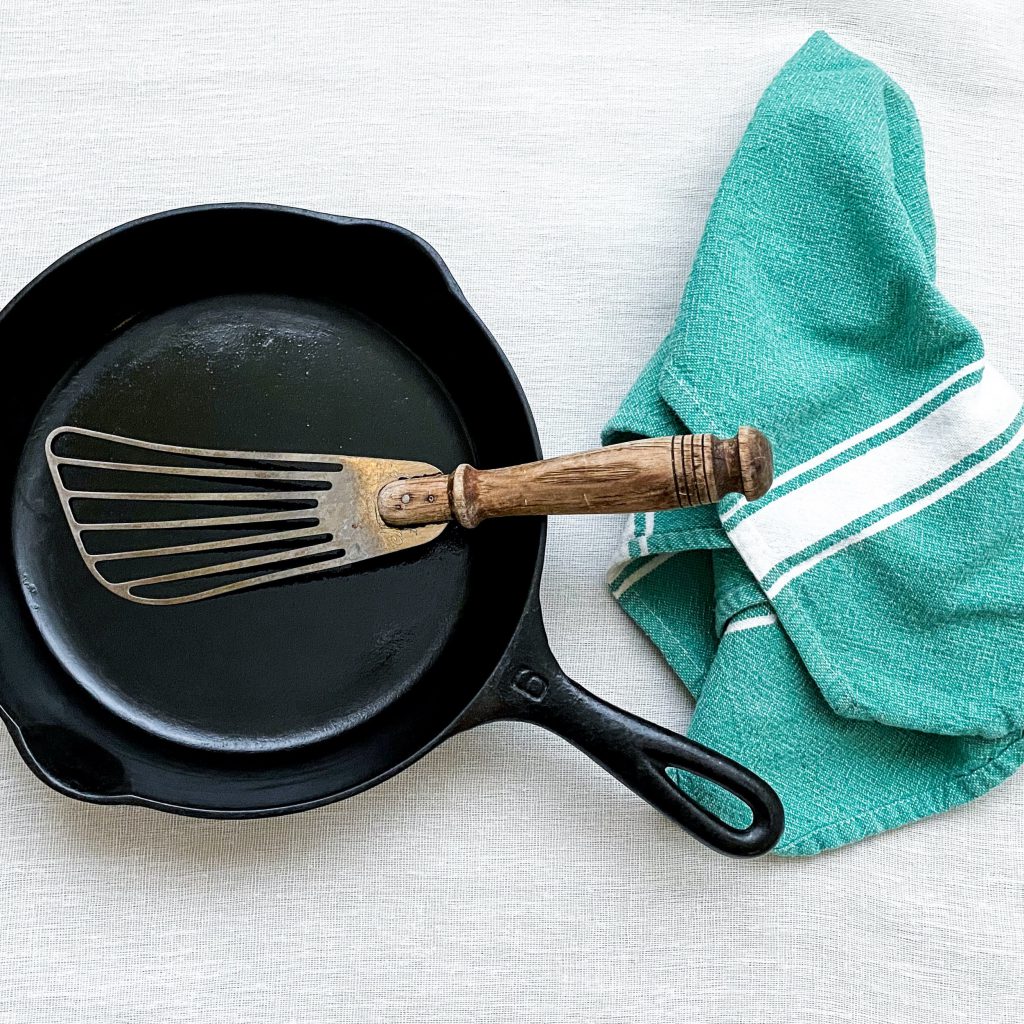
Cast iron cookware should always be hand-washed, so don’t even consider putting it in the dishwasher. But how to clean it, soap or no soap?
When you apply soap on cast iron cookware, the soap removes a portion of the valuable seasoning of the surface, i.e., the build-up oil. And we don’t want that since the seasoning determines the cast iron skillet’s cooking quality.
Moreover, because the surface of the cast iron skillet is porous, you risk leaving soap residues in its pores, which is both unhealthy and might lead to an unwanted smell.
Having said that, you can’t really remove all the seasoning with a small amount of soap. Removing excess grease after a session of cooking fish without using any soap can be a daunting task and might be why you’ve been avoiding cast iron skillets until now. There’s no need to be overly soap-avert when cleaning a cast iron skillet. Just make sure you’re using light, unscented soap as little as possible.
You can also use warm or hot water to minimize your need for resolvent chemicals. But don’t ever soak the whole skillet in water, as it might lead to rust build-up, which is why you should always dry it immediately after washing it.
And lastly, don’t use harsh metal scrubbers on your cast iron skillet. Instead, clean it with a soft sponge, nylon brush, or a scraper.
Seasoning
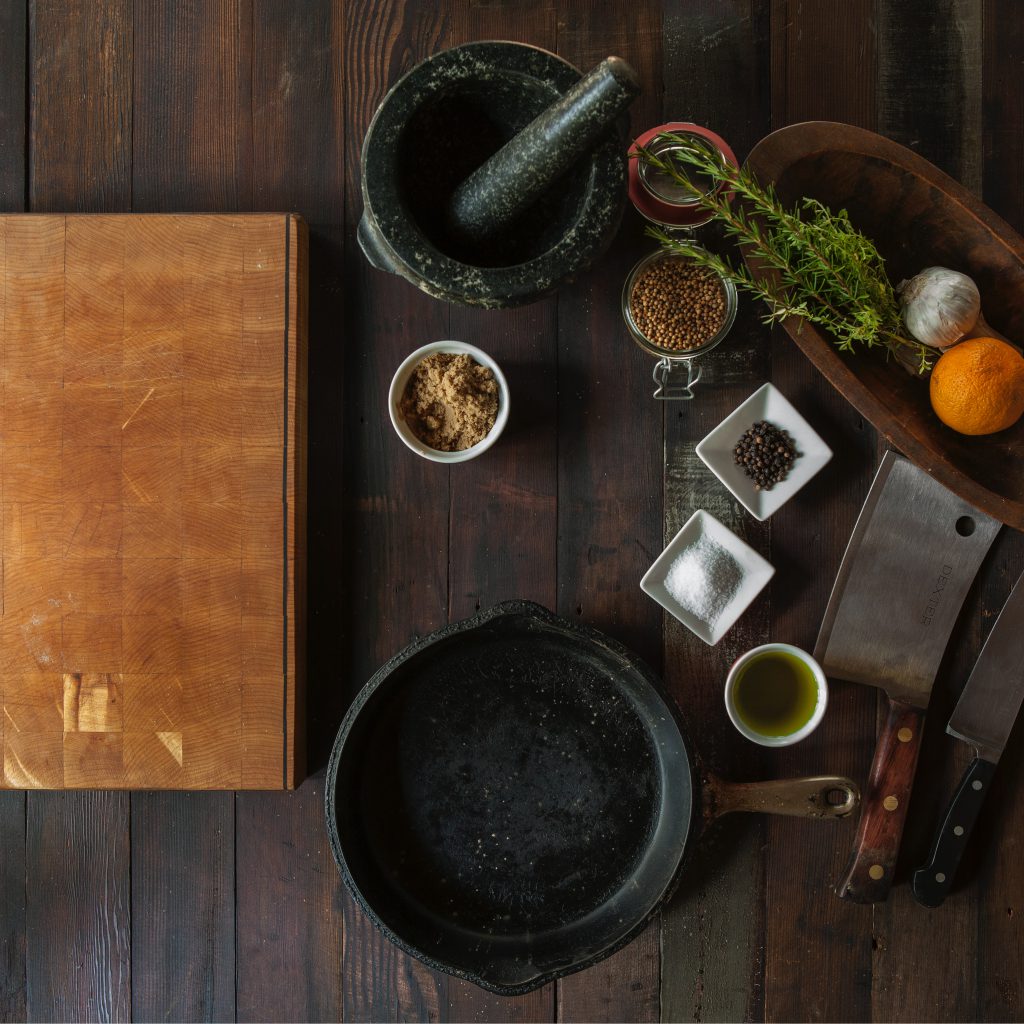
Your cast iron skillet may come pre-seasoned or not. Even if it’s pre-seasoned, going through these steps once can increase your pan’s quality.
- Hand-wash the pan.
- Dry it with a kitchen towel.
- Place it on the stovetop and heat it for about 15 minutes to remove all the moisture.
- Rub the skillet with oil, inside and out. You can use different cooking oils. We recommend corn, vegetable, canola, or flaxseed. Please don’t ever waste high-quality extra virgin olive oil on seasoning pans.
- Wipe off the excess oil with a paper towel.
- Place it in the preheated oven at 200 C and bake for 1 hour.
- Turn off the oven and let the pan cool inside the oven.
You can repeat this process for unseasoned pans 3 to 4 times for the most effective cast iron skillet experience.
What to Cook in a Cast Iron Skillet?
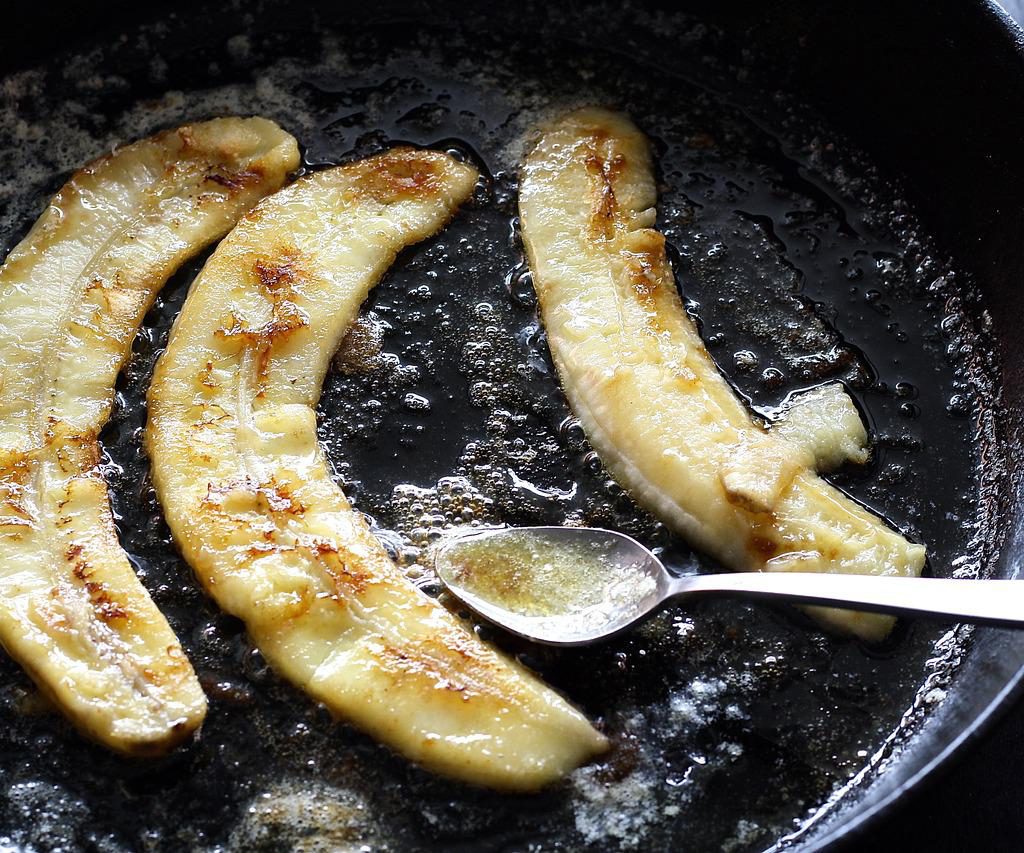
Before throwing anything in a cast iron skillet, make sure you preheat it and add oil or butter. Another thing you need to be mindful of is the acidity of the food you’re cooking. Foods that contain high levels of acid, like tomatoes, vinegar, or citrus, can damage the coating on the pan, causing discoloration on the surface. However, if your pan is seasoned correctly, occasional tomato sauces won’t do any harm.
You can get a cast iron skillet hotter than any other cookware without melting or warping it. The extra heat is particularly useful for searing meat or developing a crust on meats and vegetables. A cast iron skillet is guaranteed to give you a crisp sear on anything: hash browns, fried rice, fish, and even tofu.
Because you can put a cast iron skillet straight in the oven, it’s almost a requirement for certain dishes like paella. And thanks to its heat capacity, it’s right up the alley for fries — the oil strengthens the seasoning, so you get two birds with one stone.
You can make pancakes, Spanish tortillas, lasagna, pan pizza, meat, and vegetable stews. Don’t let this list limit you; let the creative juices run. You can make many dishes with a cast iron skillet — except the ones below.
What Not to Cook in a Cast Iron Skillet
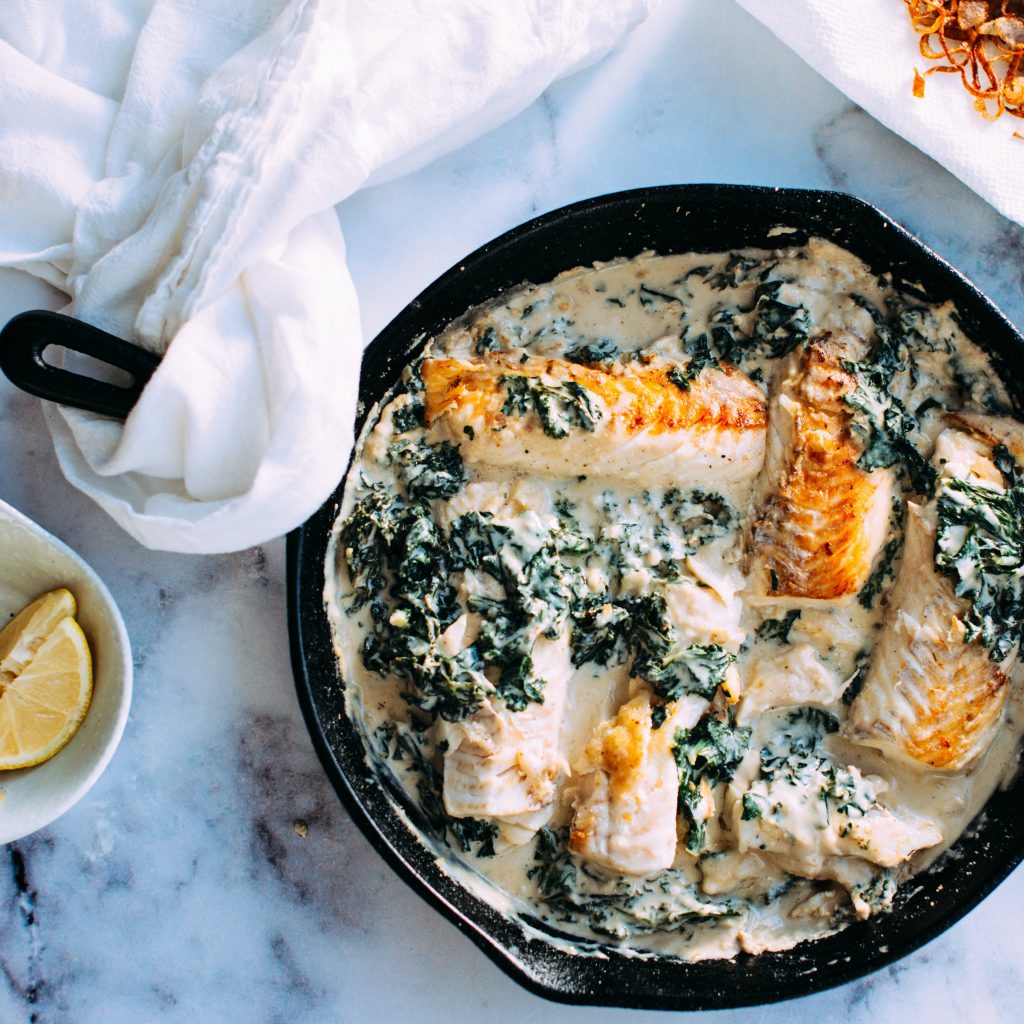
So you started experimenting with a cast iron skillet and fell in love with the golden crusts you get every time. It can be tempting to reach for the cast iron pan whenever you’re about to cook something, and you should. But, be extra careful when you cook the following types of food in your cast iron pan.
Acidic Foods
You can get away with cooking mildly acidic food in your cast iron skittle every once in a while. Besides, if you don’t slack off with the seasoning, you should be fine in most cases. However, don’t reach for the cast iron pan if you’re doing more than an occasional tomato sauce. That amount of acid will break the seasoning seal and loosen trace amounts of molecules from the pan that leach into your food, imparting a metallic flavor.
Smelly Foods
The porous surface of the cast iron takes on the flavors from the food you cook in it, especially if the seasoning is weaker. Considering you need to use a limited amount of soap when cleaning the pan, you should obviously think twice before throwing smelly food on the skillet, especially if you want to bake pies in it too. Alternatively, use separate skillets for cooking savory stews and frying fish.
Delicate Foods
Cast iron pans are known for their heat retention capacity. Even though it guarantees a good sear, higher temperatures aren’t always desirable when cooking. For example, some fish meat like tilapia or flounder are delicate and might fall apart when heated up to cast iron standards.
Other ingredients that you can easily overcook are spinach, kang kong, pechay, and herbs like basil and chives. This doesn’t mean you should exclude these from your recipes, but make sure you add them last in the pan and take the pan off the stove quickly. And remember: your food continues to cook even after you take the pan off the stove. So add that to your calculations.
Pasta
A cast iron skillet doesn’t have a problem with pasta, but it does with water. For that reason, forget the recipes that require boiling water in the pan, like pasta, boiled dumplings, or poached eggs.
Over and Out!
A cast iron skillet can be a workhorse in the kitchen, letting you achieve many recipes with a badge of golden crispy crust. While it’s true that this skillet requires more attention than other kitchenware, once you learn how to take care of it, you’ll appreciate it for the recipes it unfurls. We’re positive you’ll enjoy harnessing the power of heat retention in your favor to cook crispy, savory, and hearty dishes.


